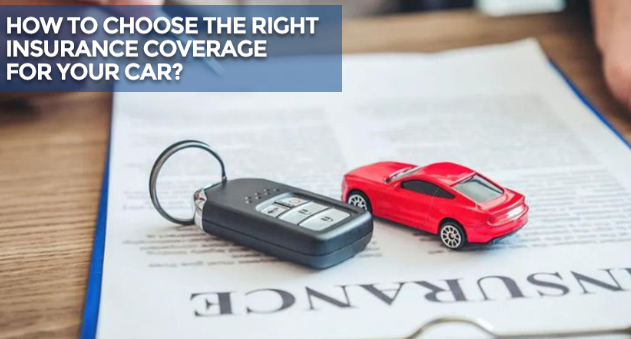Introduction to Automobile Insurance
Automobile insurance is a critical part of responsible car ownership, offering financial protection in the event of accidents, theft, or damage. However, with so many options available, finding the best automobile insurance for your needs can be overwhelming. Whether you’re a first-time driver, a parent insuring your teenager, or a seasoned motorist looking to switch providers, understanding auto insurance rates, car insurance policies, and ways to reduce car insurance premiums is essential.

In this guide, we will explore everything you need to know about automobile insurance, from choosing the right coverage options to finding cheap auto insurance and discounts that can save you money. We’ll also break down the differences between liability insurance, comprehensive coverage, and collision insurance, and provide tips on how to lower your car insurance premiums without sacrificing protection.
1. What is Automobile Insurance and Why Do You Need It?
Automobile insurance is a contract between a vehicle owner and an insurance company that provides financial protection against loss or damage to the vehicle, as well as liability for injuries or damage to other people or property. It’s required by law in most states, though the minimum amount of coverage can vary.
There are various types of auto insurance coverage available, and the policy you choose should reflect your needs, driving habits, and budget. While some drivers opt for the minimum required by law, others prefer more extensive coverage for greater peace of mind. Understanding your options and how they work is crucial to getting the right protection.
2. The Different Types of Automobile Insurance Coverage
When you shop for automobile insurance, you’ll encounter several coverage options. Let’s look at the most common types of coverage available:
2.1 Liability Coverage
Liability car insurance is the most basic form of coverage, and it’s required in most states. There are two key components of liability coverage:
- Bodily Injury Liability: This pays for medical expenses, lost wages, and legal costs if you are responsible for an accident that injures someone else.
- Property Damage Liability: This covers the cost of repairs to someone else’s vehicle or property if you cause an accident.
The amount of liability coverage required depends on state laws, but it’s always a good idea to opt for higher coverage limits to better protect your assets.
2.2 Collision Coverage
Collision coverage pays for damage to your vehicle resulting from a collision with another vehicle or an object, regardless of who is at fault. This is particularly important for people who own newer or expensive vehicles, as the repair costs can be significant.
2.3 Comprehensive Coverage
Comprehensive auto insurance covers damage to your car that is not caused by a collision. This includes protection against theft, vandalism, fire, weather damage (hailstorms, floods), and animal-related accidents. Comprehensive insurance is often bundled with collision coverage for a more complete policy, known as full coverage.
2.4 Uninsured/Underinsured Motorist Coverage
This type of coverage protects you in the event of an accident with a driver who either doesn’t have insurance or doesn’t have enough to cover the costs of the accident. If you are injured or your car is damaged by an uninsured driver, your uninsured motorist coverage will cover your medical expenses, car repairs, and other costs.
2.5 Personal Injury Protection (PIP)
PIP insurance is available in certain states and provides coverage for your medical expenses, lost wages, and funeral costs if you are injured in an accident, regardless of who is at fault. It can be helpful if you don’t have health insurance or need additional coverage for injuries sustained in a crash.
2.6 Gap Insurance
If you have a loan or lease on your car, gap insurance can protect you if your car is totaled in an accident. This type of coverage covers the difference between what your car is worth (as determined by the insurance company) and what you owe on the loan or lease.
3. How to Find Affordable Automobile Insurance
Finding cheap automobile insurance can be a challenge, but there are several ways to lower your premiums without sacrificing coverage. Here are some tips:
3.1 Shop Around for Auto Insurance Quotes
One of the most effective ways to find affordable car insurance is by comparing quotes from different car insurance companies. Prices can vary significantly between providers, so it’s important to get at least three or four quotes before making a decision.
Many websites offer comparison tools where you can quickly obtain auto insurance quotes from multiple companies. Be sure to compare both the price and the coverage offered to ensure you’re getting the best value.
3.2 Consider Your Coverage Needs
You don’t need to pay for coverage you don’t need. For example, if you drive an older vehicle, comprehensive and collision coverage might not be worth the cost. Alternatively, if you’re a high-risk driver, you may need to invest in more coverage to protect yourself financially.
3.3 Increase Your Deductible
Your deductible is the amount you pay out-of-pocket before your insurance kicks in. By increasing your deductible, you can lower your monthly premiums. However, make sure you can afford the higher deductible in the event of a claim.
3.4 Bundle Your Insurance Policies
Many insurers offer discounts if you bundle your automobile insurance with other types of insurance, such as homeowners or life insurance. If you have multiple policies, bundling can lead to significant savings.
3.5 Maintain a Clean Driving Record
Having a clean driving record is one of the easiest ways to save money on auto insurance. Insurance companies reward safe drivers with good driver discounts. If you’ve been involved in accidents or have traffic violations on your record, your premiums will be higher.
3.6 Take Advantage of Discounts
Many auto insurance providers offer discounts for things like:
- Good student discounts for young drivers with good grades.
- Low-mileage discounts if you don’t drive often.
- Safety feature discounts for cars equipped with airbags, anti-theft devices, or automatic emergency braking systems.
3.7 Consider Pay-Per-Mile or Usage-Based Insurance
If you don’t drive much, pay-per-mile auto insurance might be a cost-effective option. With this type of policy, your premiums are based on the number of miles you drive, which can significantly lower costs for low-mileage drivers. Alternatively, usage-based car insurance tracks your driving habits (such as speed and braking) and adjusts your rates based on how safely you drive.
4. Understanding How Car Insurance Premiums Are Calculated
Your car insurance premiums are determined by several factors. Understanding these can help you make adjustments to reduce your costs.
4.1 Driving History
Your driving record plays a significant role in determining your premiums. Insurance companies assess your likelihood of getting into an accident based on your previous driving history. If you’ve had accidents, speeding tickets, or DUIs, you may face higher premiums.
4.2 Age and Gender
Younger drivers typically face higher premiums because they are statistically more likely to be involved in accidents. However, as you age and gain more driving experience, your rates should decrease. Men, particularly those under 25, generally face higher premiums than women due to higher accident rates.
4.3 Location
Where you live plays a big role in your automobile insurance rates. If you live in an area with high crime rates or frequent accidents, your premiums will be higher. Urban drivers typically pay more for insurance than rural drivers, as they are at greater risk for accidents and theft.
4.4 Vehicle Type
The make, model, and year of your vehicle impact your insurance rates. High-performance vehicles and luxury cars are more expensive to insure because they’re more costly to repair or replace. Additionally, cars with a high theft rate may come with higher premiums.
5. How to Maximize Your Automobile Insurance Benefits
Having the right automobile insurance isn’t just about paying for protection—it’s about ensuring that you’re covered when you need it most. Here are some tips for maximizing the benefits of your policy:
5.1 Regularly Review Your Policy
Your insurance needs may change over time. For example, you may no longer need full coverage if you pay off your car, or you may want to adjust your coverage after moving to a new state. Review your policy annually to make sure it still fits your needs.
5.2 File Claims Promptly and Accurately
If you’re involved in an accident, it’s important to report the incident to your insurance company as soon as possible. The sooner you file a claim, the sooner the insurance company can assess the damage and start the claims process.
5.3 Take Advantage of Roadside Assistance
Some auto insurance providers offer free or discounted roadside assistance as part of their policies. This service can be a lifesaver if you’re stranded due to a flat tire, empty gas tank, or mechanical failure.
5.4 Consider Accident Forgiveness
If you’re a safe driver, you may be eligible for accident forgiveness after a certain number of years without accidents. This means that your first accident may not result in a premium increase.
Conclusion
Choosing the right automobile insurance involves understanding your coverage options, comparing quotes from multiple providers, and taking advantage of available discounts. By being proactive in managing your auto insurance premiums, you can find affordable coverage that offers the protection you need. Whether you’re a new driver or an experienced motorist, the key to securing the best deal is doing your research and staying informed about the various options available.
As you navigate the world of automobile insurance, remember to review your policy regularly and take advantage of discounts that can save you money. With the right coverage in place, you’ll have peace of mind knowing that you’re financially protected no matter what happens on the road.
Keywords Used:
- Automobile insurance
- Best auto insurance rates
- Cheap automobile insurance
- Car insurance policies
- Auto insurance quotes
- Car insurance premiums
- Full coverage automobile insurance
- Comprehensive auto insurance
- Liability car insurance
- Collision coverage insurance
- Personal injury protection (PIP)
- Uninsured motorist coverage
- Gap insurance for cars
- Low-cost auto insurance
- Safe driver discounts
- Car insurance discounts
- Auto insurance comparison
- Pay-per-mile auto insurance
- High-risk car insurance
- Multi-car insurance discounts
- Auto insurance providers
- Cheapest car insurance for young drivers
- Auto insurance for seniors
- Auto insurance with roadside assistance
- Car insurance for bad credit
- Car insurance for leased vehicles
- Car insurance for sports cars
- Insurance for electric vehicles
- Affordable car insurance for students
- Car insurance for high-performance vehicles
- Cheap car insurance for teenagers
- Best car insurance companies
